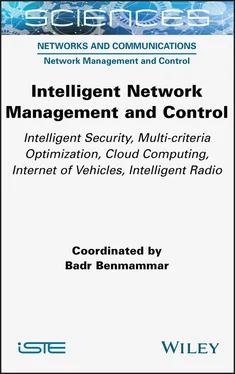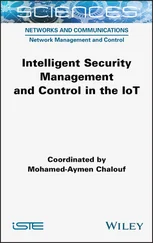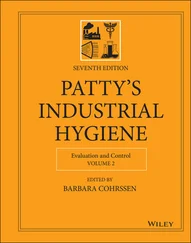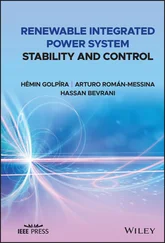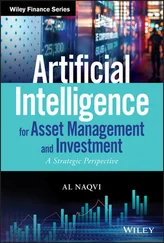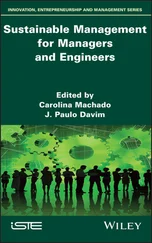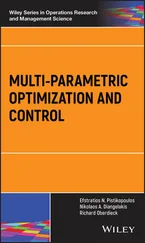1 Cover
2 Title Page SCIENCES Networks and Communications , Field Director – Guy Pujolle Network Management and Control , Subject Head – Francine Krief
3 Copyright First published 2020 in Great Britain and the United States by ISTE Ltd and John Wiley & Sons, Inc. Apart from any fair dealing for the purposes of research or private study, or criticism or review, as permitted under the Copyright, Designs and Patents Act 1988, this publication may only be reproduced, stored or transmitted, in any form or by any means, with the prior permission in writing of the publishers, or in the case of reprographic reproduction in accordance with the terms and licenses issued by the CLA. Enquiries concerning reproduction outside these terms should be sent to the publishers at the undermentioned address: ISTE Ltd 27-37 St George’s Road London SW19 4EU UK www.iste.co.uk John Wiley & Sons, Inc. 111 River Street Hoboken, NJ 07030 USA www.wiley.com © ISTE Ltd 2020 The rights of Badr Benmammar to be identified as the author of this work have been asserted by him in accordance with the Copyright, Designs and Patents Act 1988. Library of Congress Control Number: 2020937506 British Library Cataloguing-in-Publication Data A CIP record for this book is available from the British Library ISBN 978-1-78945-008-8 ERC code: PE7 Systems and Communication Engineering PE7_1 Control engineering PE7_8 Networks (communication networks, sensor networks, networks of robots, etc.)
4 Introduction
5 PART 1: AI and Network Security
1 Intelligent Security of Computer Networks
1.1. Introduction 1.2. AI in the service of cybersecurity 1.3. AI applied to intrusion detection 1.4. AI misuse 1.5. Conclusion 1.6. References 2 An Intelligent Control Plane for Security Services Deployment in SDN-based Networks 2.1. Introduction 2.2. Software-defined networking 2.3. Security in SDN-based networks 2.4. Intelligence in SDN-based networks 2.5. AI contribution to security 2.6. AI contribution to security in SDN-based networks 2.7. Deployment of an intrusion prevention service 2.8. Stakes 2.9. Conclusion 2.10. References
6 PART 2: AI and Network Optimization 3 Network Optimization using Artificial Intelligence Techniques 3.1. Introduction 3.2. Artificial intelligence 3.3. Network optimization 3.4. Network application of AI 3.5. Conclusion 3.6. References 4 Multicriteria Optimization Methods for Network Selection in a Heterogeneous Environment 4.1. Introduction 4.2. Multicriteria optimization and network selection 4.3. “Modified-SAW” for network selection in a heterogeneous environment 4.4. Conclusion 4.5. References
7 PART 3: AI and the Cloud Approach 5 Selection of Cloud Computing Services: Contribution of Intelligent Methods 5.1. Introduction 5.2. Scientific and technical prerequisites 5.3. Similar works 5.4. Surveyed works 5.5. Conclusion 5.6. References 6 Intelligent Computation Offloading in the Context of Mobile Cloud Computing 6.1. Introduction 6.2. Basic definitions 6.3. MCC architecture 6.4. Offloading decision 6.5. AI-based solutions 6.6. Conclusion 6.7. References
8 PART 4: AI and New Communication Architectures 7 Intelligent Management of Resources in a Smart Grid-Cloud for Better Energy Efficiency 7.1. Introduction 7.2. Smart grid and cloud data center: fundamental concepts and architecture 7.3. State-of-the-art on the energy efficiency techniques of cloud data centers 7.4. State-of-the-art on the decision-aiding techniques in a smart grid-cloud system 7.5. Conclusion 7.6. References 8 Toward New Intelligent Architectures for the Internet of Vehicles 8.1. Introduction 8.2. Internet of Vehicles 8.3. IoV architectures proposed in the literature 8.4. Our proposal of intelligent IoV architecture 8.5. Stakes 8.6. Conclusion 8.7. References
9 PART 5: Intelligent Radio Communications 9 Artificial Intelligence Application to Cognitive Radio Networks 9.1. Introduction 9.2. Cognitive radio 9.3. Application of AI in CR 9.4. Categorization and use of techniques in CR 9.5. Conclusion 9.6. References 10 Cognitive Radio Contribution to Meeting Vehicular Communication Needs of Autonomous Vehicles 10.1. Introduction 10.2. Autonomous vehicles 10.3. Connected vehicle 10.4. Communication architectures 10.5. Contribution of CR to vehicular networks 10.6. SERENA project: self-adaptive selection of radio access technologies using CR 10.7. Conclusion 10.8. References
10 List of Authors
11 Index
12 End User License Agreement
1 Chapter 2Table 2.1. Classification of shared network information (Oktian et al. 2017)Table 2.2. System configuration of SDN networksTable 2.3. The most commonly used machine learning techniques for computer secur...Table 2.4. Construction of rule heading
2 Chapter 4Table 4.1. Weighting methodsTable 4.2. Advantages and drawbacks of multicriteria optimization methodsTable 4.3. Values of simulationsTable 4.4. Input matrixTable 4.5. Weighting vectorsTable 4.6. Ranking for VoIPTable 4.7. Ranking for video serviceTable 4.8. Ranking for best effort serviceTable 4.9. Ranking when one alternative disappears
3 Chapter 7Table 7.1. Comparative table of works
4 Chapter 8Table 8.1. Comparison of various proposed architectures
5 Chapter 10Table 10.1. Various SAE automation levels (source: 2014 SAE International)Table 10.2. Constraints expressed for road safety vehicular applicationsTable 10.3. Constraints expressed for vehicular entertainment applicationsTable 10.4. ITS-G5 systemTable 10.5. Table of ITS-G5 frequency allocation in Europe (IEEE 2010)
1 Chapter 1Figure 1.1. Progress in image recognition (benchmark ImageNet), “Electronic Fron...Figure 1.2. Organizations and countries relying on artificial intelligence to id...
2 Chapter 2Figure 2.1. Simplified SDN architecture (Zhang et al. 2017)Figure 2.2. Control plane distribution modelsFigure 2.3. Architecture of IPSec tunnel service deployment in an SDN-based netw...Figure 2.4. Tunnel deployment processFigure 2.5. Logical topology of the test bedFigure 2.6. Physical topology of the test bedFigure 2.7. (A) Performance of the deployment of IPSec security service on SDN. ...Figure 2.7. (B) Performance of the deployment of IPSec security service on SDN. ...Figure 2.8. Architecture of signature learning serviceFigure 2.9. Architecture of a Learning Node (LN)Figure 2.10. Architecture of an intelligent SDN with IDSFigure 2.11. Interactions between components of data architecture
3 Chapter 3Figure 3.1. Analogy square of ESFigure 3.2. Artificial neural network (Decourt 2018)
4 Chapter 4Figure 4.1. A heterogeneous environment (Bendaoud 2018)Figure 4.2. Heterogeneous environment (Bendaoud 2018)Figure 4.3. Network selection process (Bendaoud et al. 2018b)Figure 4.4. Network selection processFigure 4.5. Delay and lost packets comparison for N(0) and N(4). For a color ver...Figure 4.6. Throughput and delay comparison for N(5) and N(4). For a color versi...Figure 4.7. Comparison between N(2) and N(4). For a color version of this figure...Figure 4.8. Comparison between N(2) and N(1). For a color version of this figure...
5 Chapter 5Figure 5.1. Public deployment of cloud computing. For a color version of this fi...Figure 5.2. Private deployment of cloud computing. For a color version of this f...Figure 5.3. Community deployment of cloud computing. For a color version of this...Figure 5.4. Distribution of customer/provider management in a cloud computing en...
6 Chapter 6Figure 6.1. Conversion of an application code into a weighted relation graph (Mo...Figure 6.2. Stages of offloading decisionFigure 6.3. Star graphFigure 6.4. Generic architecture of MCC (Gupta and Gupta 2012)Figure 6.5. B&B treeFigure 6.6. Chromosome
Читать дальше
